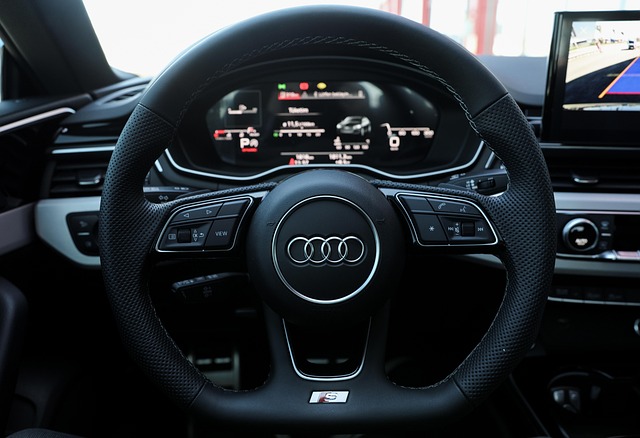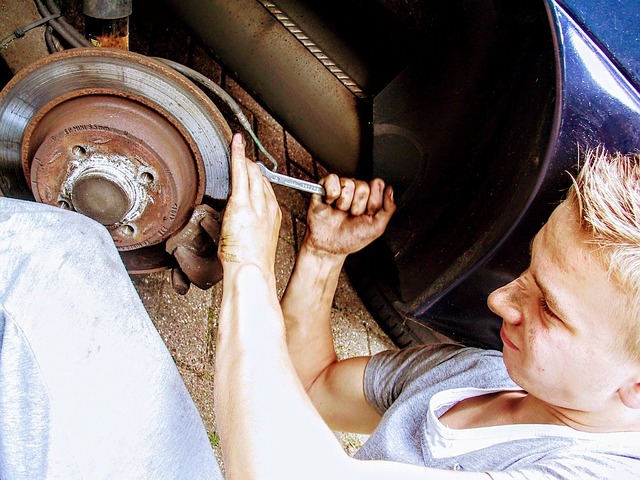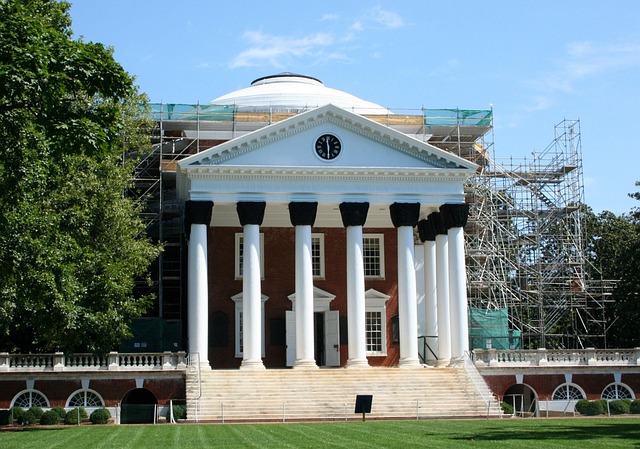Testing Mercedes Soft-Close Doors: Tools & Safety After Repair
Repairing Mercedes soft-close doors requires a meticulous approach. Technicians must inspect door pa…….
Welcome to an extensive exploration of the art and technology behind Mercedes soft-close doors repair. In today’s automotive landscape, where safety, comfort, and innovation go hand in hand, the soft-close door mechanism has become a defining feature of premium vehicles, with Mercedes-Benz leading the charge. This article aims to guide you through the intricate world of this specialized repair, offering insights into its history, technical intricacies, global impact, economic significance, and future prospects. By delving into these aspects, we will uncover why Mercedes soft-close doors repair is not just a service but a testament to automotive engineering excellence.
Definition: Mercedes soft-close doors, as the name suggests, are door systems equipped with a unique mechanism that allows them to close smoothly and quietly without any sudden jerks or banging. This feature not only enhances the overall driving experience but also contributes to passenger safety and vehicle aesthetics.
Core Components: The heart of a Mercedes soft-close door lies in its intricate mechanism, which typically consists of:
Historical Context: The concept of soft-close doors has evolved over several decades, with early attempts focusing on simple rubber seals to prevent loud door closings. However, Mercedes-Benz revolutionized this idea in the late 1990s with the introduction of its Active Body Control (ABC) system, which incorporated electronic controls and dampers for a more sophisticated approach. This marked the beginning of widespread adoption of soft-close mechanisms in premium vehicles.
Significance: Beyond providing a luxurious experience, Mercedes soft-close doors offer several advantages:
The global automotive industry is a vast landscape, with varying preferences and regulations dictating the adoption of Mercedes soft-close doors repair. Here’s an overview:
| Region | Market Dynamics | Key Trends | Regional Influence |
|---|---|---|---|
| North America | High demand for luxury vehicles, driven by a growing affluent population. Strict safety regulations favor advanced door systems. | Increasing use of electric vehicle (EV) platforms with integrated soft-close mechanisms. | Early adopters of premium automotive features, setting trends for the global market. |
| Europe | Stringent environmental and safety standards. High focus on fuel efficiency and emission reduction. | Growing preference for lightweight materials to meet emission targets, impacting door design. | European automakers lead in developing eco-friendly solutions, influencing global trends. |
| Asia Pacific | Rapidly growing automotive market, particularly in China and India. A mix of budget-conscious buyers and luxury enthusiasts. | Local automakers focusing on cost-effective yet feature-rich vehicles, challenging traditional luxury brands. | Asian markets drive innovation with unique design preferences and technological adoption rates. |
| Latin America | Emerging market with varying economic conditions. Increasing urban population demands safer, more comfortable vehicles. | Local manufacturers offering affordable soft-close doors as a standard feature to attract price-conscious buyers. | Influenced by global trends but also shaping its own unique automotive identity. |
Market Dynamics: The Mercedes soft-close doors repair market is a niche yet lucrative segment within the broader automotive aftermarket. Several factors drive its economic significance:
Investment Patterns: Major players in the automotive industry heavily invest in research and development (R&D) to create advanced door systems. These investments translate into:
Economic Impact: From a macro-economic perspective, the soft-close doors repair sector contributes to:
The realm of Mercedes soft-close doors repair is constantly evolving, driven by technological breakthroughs and engineering innovations. Here’s an insight into some significant developments:
The global automotive industry operates within a web of policies and regulations that shape the development and adoption of Mercedes soft-close doors repair. Here’s an overview:
| Region | Key Policies/Regulations | Impact on Soft-Close Doors |
|---|---|---|
| European Union (EU) | EU’s New Car Assessment Program (NCAP) sets safety standards, including requirements for door impact performance. | Manufacturers must design doors to meet stringent crash test criteria, influencing the choice of materials and closure mechanisms. |
| United States | National Highway Traffic Safety Administration (NHTSA) enforces safety standards, with specific regulations on door latches and closures. | Local automakers ensure their products comply with NHTSA’s requirements, impacting door system design and testing procedures. |
| China | The country has strict environmental and safety standards, with ongoing updates to keep pace with global trends. | Chinese automakers invest in R&D to meet these standards, often adopting advanced technologies faster than other regions. |
| India | The Automotive Industry Standard (AIS) provides guidelines for vehicle safety and emissions. | Local manufacturers must adhere to AIS, influencing the choice of door systems to balance safety and cost. |
Despite its many advantages, Mercedes soft-close doors repair faces certain challenges and criticisms that require strategic solutions:
Strategic Solutions: To address these issues:
Let’s delve into a few case studies to understand the practical applications of Mercedes soft-close doors repair and the lessons learned from them:
Case Study 1: Mercedes-Benz S-Class (2020)
Case Study 2: Volkswagen Passat (2019) – Global Market Adaptation
Case Study 3: Tesla Model S – Electric Revolution
The future of Mercedes soft-close doors repair is brimming with potential growth areas and emerging trends that shape the industry’s trajectory:
In conclusion, Mercedes soft-close doors repair is not merely a technical fix but a testament to the automotive industry’s relentless pursuit of innovation, safety, and customer satisfaction. From its inception to its global impact, this feature has evolved into a defining aspect of premium vehicles. As technology advances and consumer preferences shift, the industry will continue to navigate challenges and embrace opportunities, ensuring that the soft-close door remains a symbol of automotive craftsmanship.
Q: How do Mercedes soft-close doors differ from traditional door mechanisms?
A: Traditional doors rely on simple mechanical latches and springs, offering little control over closure speed or force. In contrast, Mercedes soft-close doors use electronic controls, hydraulic/pneumatic dampers, and sensors for precise, gentle closure, enhancing safety and comfort.
Q: Are these doors more expensive to maintain than conventional ones?
A: While the initial cost may be higher, regular maintenance can extend the life of soft-close door systems, making them cost-effective in the long run. Most issues are preventable with proper care, such as keeping sensors clean and lubricating actuators as needed.
Q: Can I retrofit a soft-close system to my older vehicle?
A: Yes, it is possible to install soft-close door systems on older vehicles, but it may require significant customization and professional installation due to differences in vehicle architecture and safety standards.
Q: How do environmental concerns impact the development of these doors?
A: Environmental considerations drive the search for lightweight, eco-friendly materials, especially for sensors, actuators, and structural components. Sustainable practices also influence recycling and disposal methods for end-of-life vehicles.
Q: Will soft-close doors become standard across all vehicle classes in the future?
A: As EV adoption grows and safety standards evolve, soft-close doors are likely to become more prevalent, eventually reaching broader market segments. However, cost and regulatory factors may limit their immediate universal application.

Repairing Mercedes soft-close doors requires a meticulous approach. Technicians must inspect door pa…….

Impact damage to Mercedes soft-close doors can cause visible deformities, misalignments, and structu…….

Mercedes soft-close doors, renowned for their smooth operation and aesthetic appeal, rely on intrica…….

The Mercedes soft-close door mechanism, a luxury automotive engineering marvel, ensures smooth and q…….

Mercedes soft-close doors, renowned for their sophisticated design and smooth operation, can develop…….

Mercedes soft-close doors, celebrated for their sophisticated engineering and innovative features, r…….

Mercedes soft-close doors, celebrated for their smooth operation and stylish design, require regular…….

Mercedes soft-close doors, renowned for their smooth operation and quiet closing, can develop issues…….